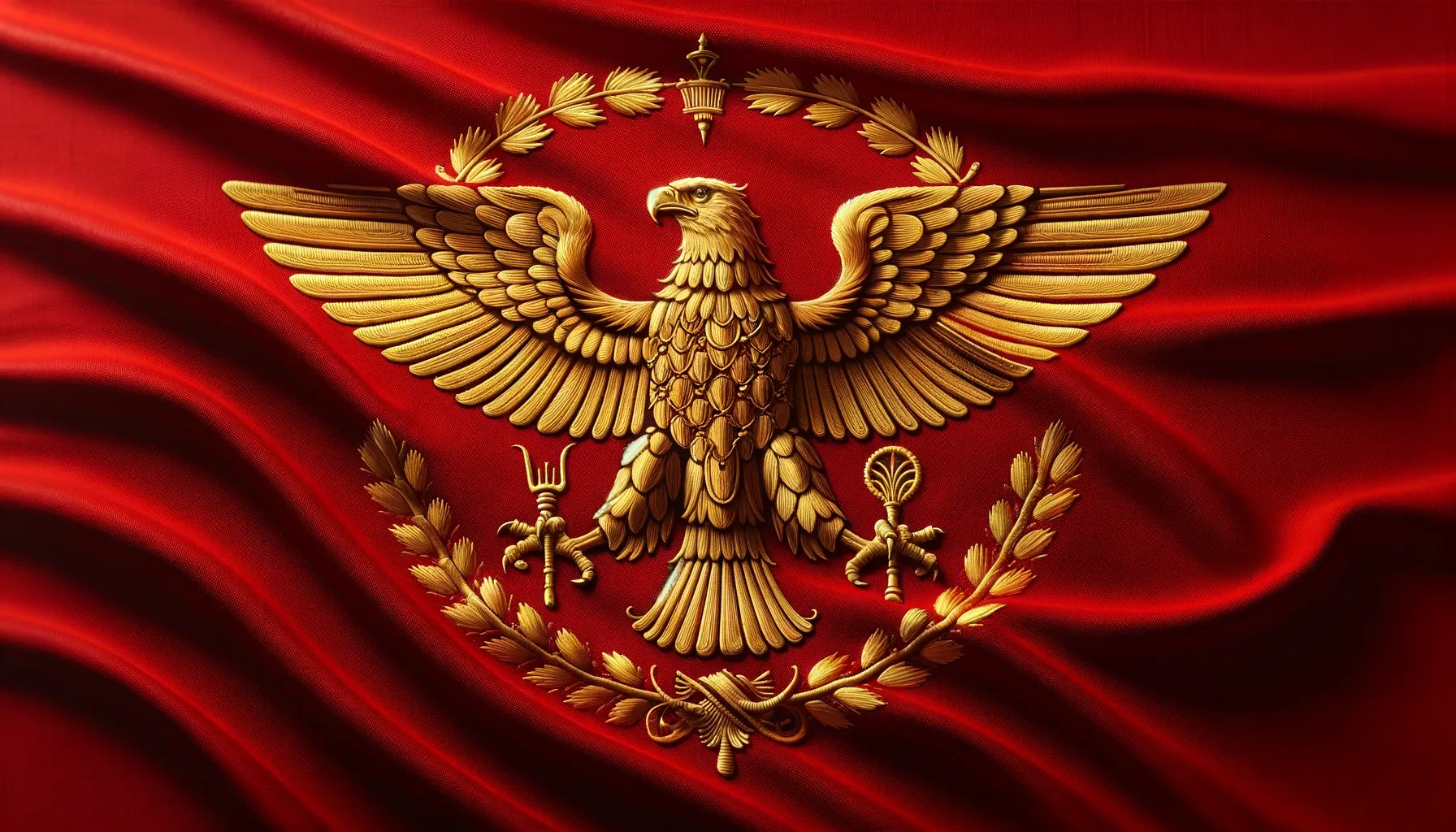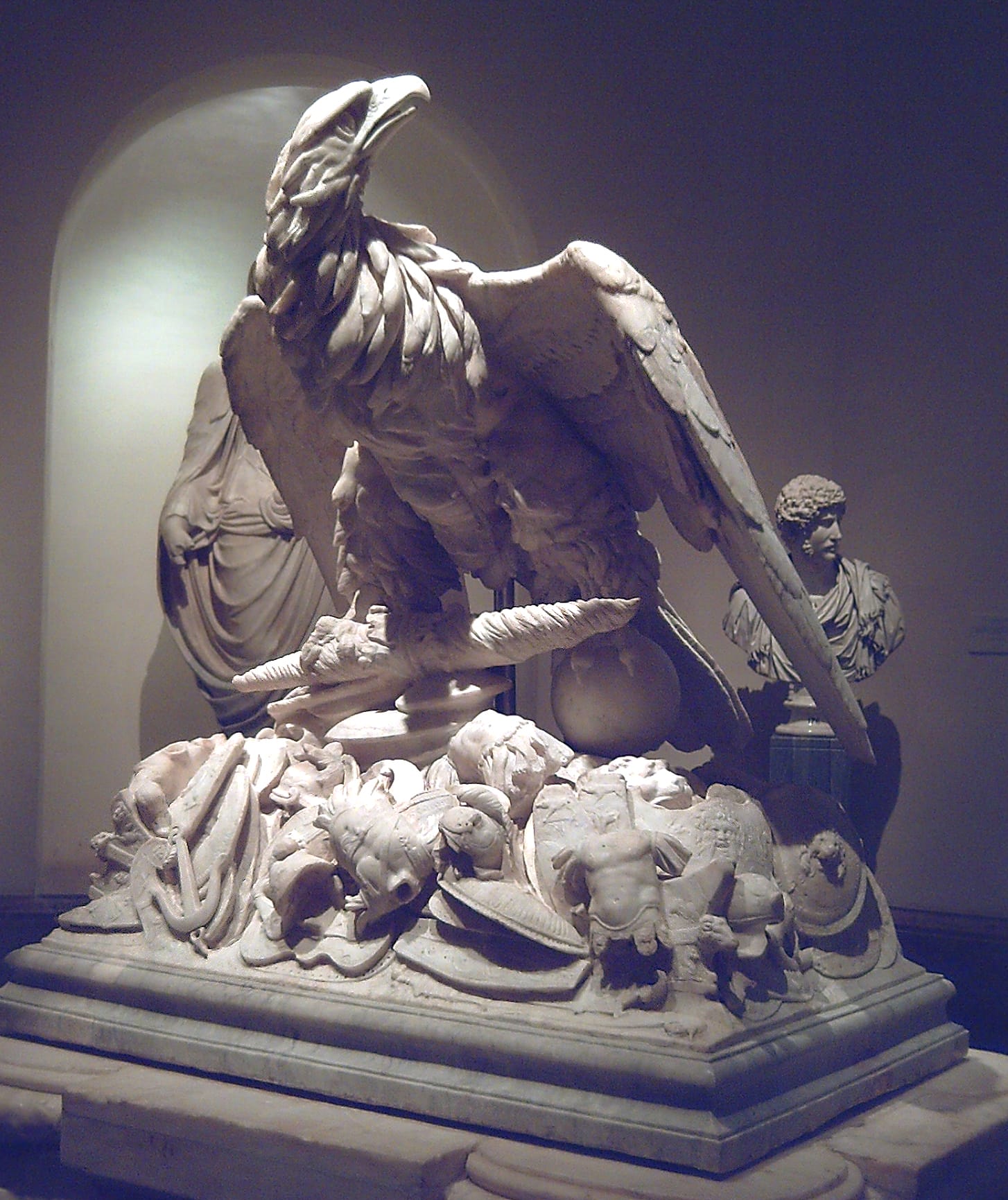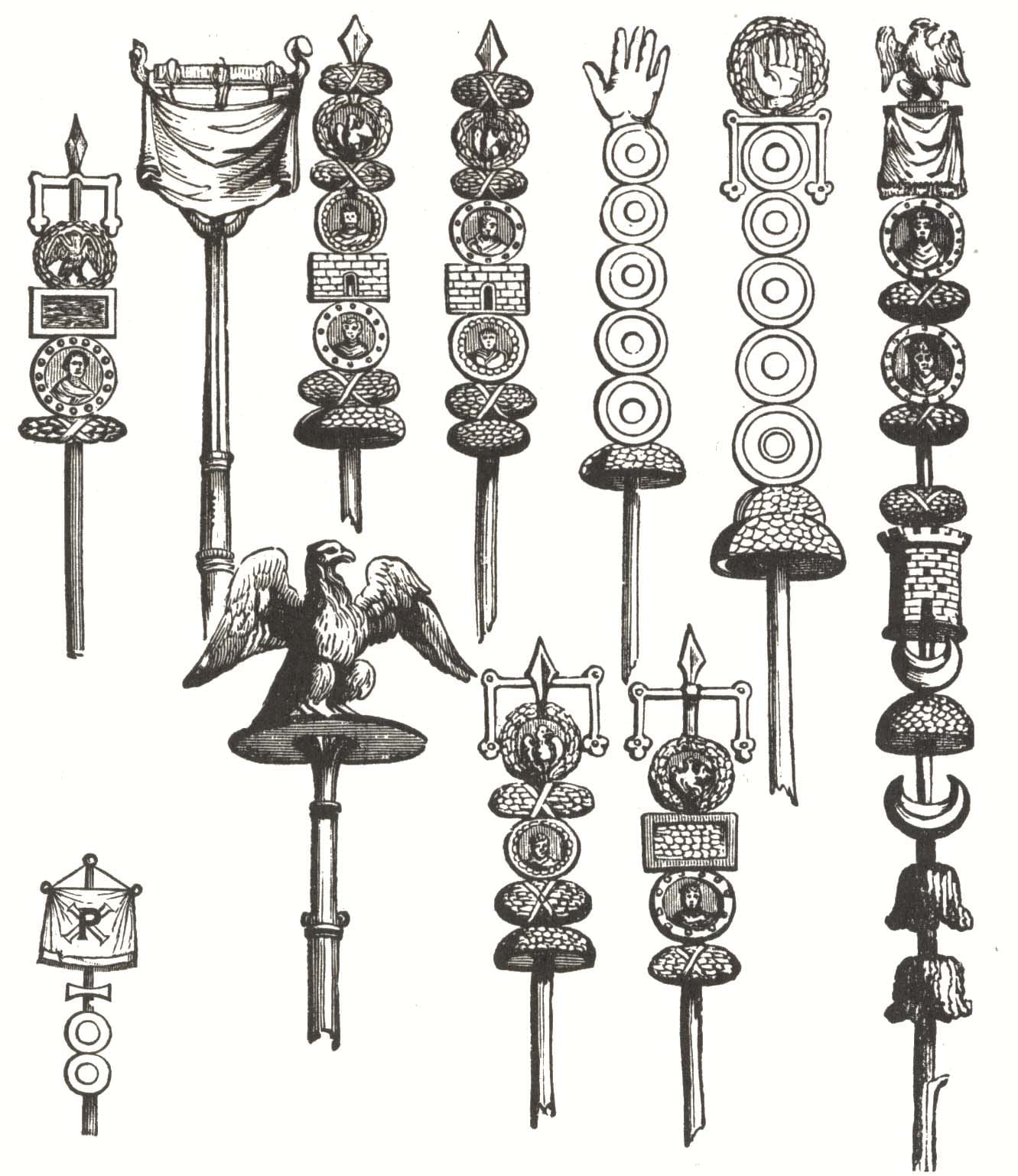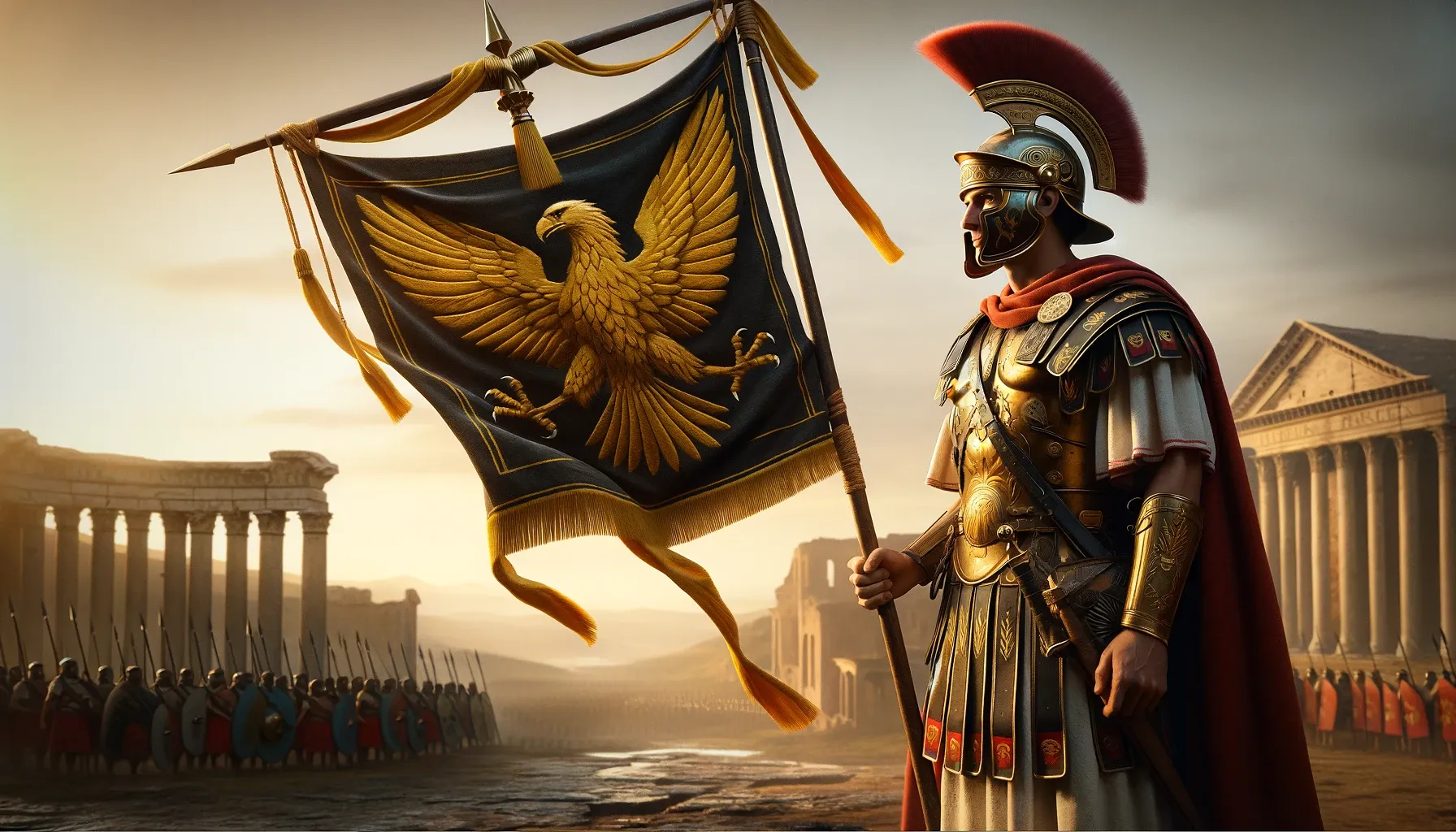Why has the Eagle become the Roman Symbol?
The eagle, known as 'Aquila' in Latin, stands as one of the most iconic and long-lasting emblems of Rome's heritage.

The Origins of an Icon
The eagle, known as 'aquila' in Latin, stands as one of the most iconic and long-lasting emblems of Rome's heritage. Throughout the eras of both the Republic and the Empire, while various animals and legendary figures held significant symbolism, it was the eagle that consistently represented dominion and might.
The use of the eagle as a symbol of state power was not initiated by the Romans. However, they adopted it with such fervor and reverence that it became synonymous with their empire's enduring strength. The Aquila, which signified courage and immortality, was more than just a bird; it was a divine signal of Rome's indomitable spirit.
Gaius Marius and the Aquila
The Roman Empire’s standard, the Aquila or eagle, emerged from a selection of animals used as military emblems, as noted by Pliny the Elder. Originally, symbols like the wolf, boar, minotaur, and horse, along with the eagle, represented Rome's might. However, during Gaius Marius' second term as consul, back to 102 BC, it was decided the eagle would singularly symbolize Rome, a shift from the Republic's diverse standards to the Empire's unified representation.

By elevating the Aquila above all other military ensigns, Marius not only streamlined legionary symbolism but also instilled a unifying emblematic identity across the Roman military.
Pliny the Elder writes:
“Caius Marius, in his second consulship, assigned the eagle exclusively to the Roman legions. Before that period it had only held the first rank, there being four others as well, the wolf, the minotaur, the horse, and the wild boar, each of which preceded a single division.”
The eagle, a potent avian predator and apex within its ecological niche, was chosen for its connotations of supremacy, valor, and indomitability — qualities Rome aspired to embody. Of course we cannot forget that the eagle was also the symbol of Jupiter, which gives a religious aspect to the choice.
Legionnaires held their standards in high regard, with the role of the aquilifer, or eagle-bearer, established to honorably carry and zealously guard the emblem. The loss of an aquila was considered a critical blow to a legion's morale, symbolizing the loss of its essence, often prompting desperate efforts to reclaim it, reflecting the emblem’s profound significance in Roman military tradition.
Roman culture and the Eagle
Eagles were deeply ingrained in the fabric of Roman culture from the very beginning. According to Rome's legendary origins, the decision between Romulus and Remus on the city's location was to be divinely determined by an eagle sighting. While Remus first saw six, Romulus claimed to have seen twelve, leading to a conflict that tragically ended with Romulus founding Rome on the Palatine Hill after the death of his brother.

Romans held the eagle in high esteem, connecting it with Jupiter, the king of gods, symbolizing authority and power. Transitioning from the Republic to the Empire, the eagle's image was revered as a beacon of might and honor. It wasn't uncommon to find eagle statues in tombs as they represented a powerful funerary motif. The Romans believed that the eagle's flight from an emperor's funeral pyre signified the soul's ascent to divine status.
The eagle's prominence was such that it became an emblem of military triumphs. Pliny the Elder praised the eagle's virtues, highlighting its keen vision and nurturing nature. He even asserted that the eagle was immune to lightning, a trait that heightened its divine aura. This symbolism has persisted, with the eagle often depicted grasping lightning bolts, a nod to its celestial connections that continues into the present day.
The Aquila in Military Life
The cohesion and strength of a Roman legion hinged on its soldiers' discipline and loyalty, with emblems and icons serving as focal points for unity and representation in battle.
Initially, the Roman army utilized simple straw bundles atop poles as standards. These early symbols evolved, and creatures like eagles, wolves, minotaurs, horses, and boars became emblems representing various legion groups.
The Roman military, reevaluating its strategies following the devastating loss at the Battle of Arausio in 105 BC, underwent significant reform under Consul Gaius Marius. These changes upgraded the army from a citizen militia to a professional force.
Marius, spearheading this transformation, established the eagle as the sole standard-bearer for military legions, dismissing the other animals. This decision was strategic, aiming to instill the eagle's perceived attributes of valor and dominance into the legion's core identity.
From that point in the mid-Republican period, the bronze or silver Aquila with outstretched wings became the standard symbol of Roman military might.

The Legion's Heartbeat
Initially, the Roman legion's eagle standard likely featured a silver construction, grasping a golden thunderbolt, symbolizing divine power. Atop the standard, a golden bar proclaimed "SPQR" (Senatus Populusque Romanus), paying homage to the Roman Senate and its citizens. Beyond its emblematic significance of the legion and the Empire's might, the eagle served a crucial tactical role on the battlefield. Soldiers would use the standard as a point of reference during combat, ensuring they remained close to this rallying symbol. Upon establishing camp, securing the eagle was paramount, often meriting its own shelter. The aquilifer, a designated soldier, bore the esteemed duty of carrying this emblem into conflict and ensuring its safeguarding.
A Standard Worth Dying For
For any Roman legion, the eagle was more than just a symbol; it was the embodiment of its spirit and unity. The loss of an eagle was a devastating blow, symbolically representing the legion's defeat and dishonor. This sentiment was starkly evident in the aftermath of the Battle of the Teutoburg Forest in 9 CE, where Germanic tribes annihilated three Roman legions and seized their eagles. The mission to reclaim these eagles, led by Germanicus in the subsequent campaigns, underscores their significance. Successfully retrieving two of the three eagles highlighted the Roman resolve to restore honor. Similarly, the Fifth Legion Alaudae's experience in 17 AD, where it lost but later regained its eagle, demonstrates that the recovery of these emblems was crucial for maintaining a legion's integrity and continuity.
An Empire's Metaphor
The eagle transcended its military roots to perch atop Roman society's collective consciousness. It represented the empire's reach, enveloping not just the land under its dominion but also the aspirations and values of Roman civilization.
The Eagle's Modern Flight
Today, the Roman eagle endures as a symbol adopted by numerous institutions, reflecting the legacy of leadership, vision, and power it originally symbolized. From governmental emblems to sporting insignias, the Aquila continues to inspire awe and command respect, much like it did centuries ago.





About the Roman Empire Times
See all the latest news for the Roman Empire, ancient Roman historical facts, anecdotes from Roman Times and stories from the Empire at romanempiretimes.com. Contact our newsroom to report an update or send your story, photos and videos. Follow RET on Google News, Flipboard and subscribe here to our daily email.
Follow the Roman Empire Times on social media: